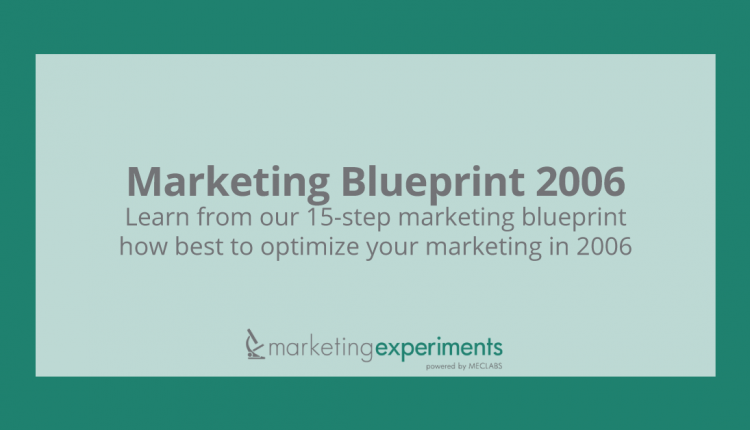Marketing Blueprint 2006
Learn from our 15-step marketing blueprint how best to optimize your marketing in 2006
We recently released the audio recording of our clinic on this topic. You can listen to a recording of this clinic here:
As you look at the year ahead, how do you know which marketing efforts will yield the highest returns? And how do you know the best sequence in which to apply various tactics? The choices can be overwhelming, and mistakes can be expensive.
To help you in this task, we have put together a revised Marketing Blueprint for 2006.
How can it help? It can help you cut through the clutter and avoid wasting time and resources on tactics unlikely to give you a worthwhile ROI.
In other words, it can keep you focused on what works best.
This blueprint is drawn from our own experiments with our research partners. These are the steps we follow ourselves. And as you’ll see from some of the test data we share to illustrate the various steps, the results of following this plan can be dramatic.
As you consider each step, here are some qualifiers to keep in mind:
-
Not every single step described applies to every single business online. Consider each point we talk about, and eliminate only those which do not apply to your business.
-
If you want to share and apply the data and learning from a particular report, take advantage of the option to print it out as a PDF document. Follow the example of some of our partners and others who have bound the reports and work through them line by line with their colleagues.
-
Keep in mind that some of the research reports we refer to are based on testing we conducted two or three years ago. While the principles and learning opportunities remain valuable, some of the companies and sites we covered in our research may have been acquired, changed name or gone out of business.
-
If you find that you would like more help than the various reports provide, you may want to consider applying for a research partnership with us. To find out more, visit:
In the next brief we will be looking at case histories of companies which have followed our blueprint, and we will also have the opportunity to answer your questions.
Here is an overview of the 16-step 2006 Marketing Blueprint:
We have provided abstracts and links to each report below. Many of the online reports also include archived audio recordings from our interactive web clinics. Additionally, some topics also include spreadsheet tools that will help you make strategic calculations about your marketing.
— Conduct a Competitive Analysis and Plan Your Strategy |
|
|||
— Optimize Your Home Page and Landing Pages |
|
|||
— Optimize Your Website Copy |
|
|||
— Implement Your Website Metrics and Testing Platform(s) |
|
|||
— Improve Your Order Process |
|
|||
— Develop Your Email Capture |
|
|||
— Optimize Your Offer Pricing |
|
|||
— Set Up Your Comparison
|
|
|||
— Set Up Your Pay-Per-Click Campaigns |
|
|||
— Optimize Your Website for Natural Search Engines |
|
|||
— Implement a Linking Campaign |
|
|||
— Pursue Site Credibility Indicators |
|
|||
— Utilize Email Marketing |
|
|||
— Explore Alternative Marketing Channels |
|
|||
— Explore Additional Marketing Opportunities |
|
|||

Credits:
Editor — Flint McGlaughlin
Writers — Brian Alt
Nick Usborne
Contributors — Jalali Hartman
Jimmy Ellis
Bob Kemper
Aaron Rosenthal
HTML Designer — Cliff Rainer




